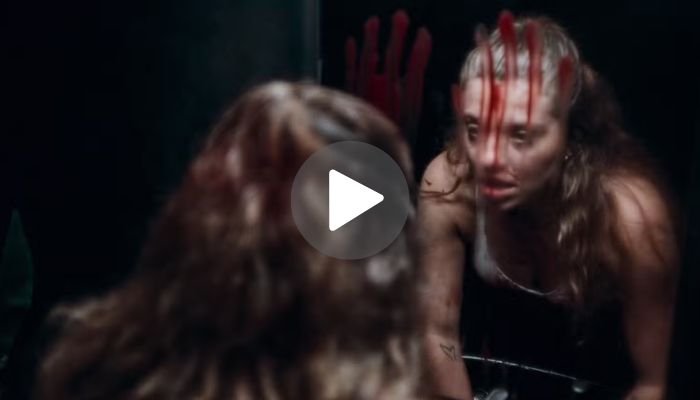
The challenge of films featuring a ‘one shot’ style (or films that seem to only rely on a one shot style) is that the Director or film maker is mostly focused on the technical aspect of shooting the film and not the narrative or the cast. For every 1917, a summer blockbuster film with enough footage shot in one angle that allows the audience to breath through the onslaught that was world war one, to the stunning Aurorar of 2002’s Russian Ark which gave us femtosecond scopes of Russia through the ages, there is also Irréversible, Gaspar Noé’s despicable piece depicting woman’s sexual abuse suffering, to Silent House of 2011 which is essentially husbanding a cos of Elizabeth Olsens performance and her horrific ambience.
In between these two extremes lies MadS, that can only claim to be a one-take (in fact it is five takes put together) in which it made the fatal error of being created by David Moreau, a director whose works usually are more than the story being told. This was clearly applicable for his 2006 suspense born feature Ils (Them in French) as well as his youthful rendition to M. Night Shyamalan in Seuls (Alone in French). It is also applicable in the case of MadS. Here he follows one cliché after another as he directs a film about a viral epidemic, which is becoming extremely boring.
One benefit of showing MadS in one take is the close POV which presents exactly what that character knows and brings in, which is tension and suspense. And with only three main characters, Moreau – who also penned the script – would be able to piece out vital information in much awaited bites regardless of how unexciting the information may not be different from such thrillers.
The first hint of what is in store occurs in the passenger seat of borrowed Mustang of the 18 year old Romain (Milton Riche). With a birthday buzz and some new beans up his nose for good measure, Romain pulls up to retrieve some stray cigarette embers before a wherein a manic and heavily bandaged woman appears in his auto with proof that she has been an apparent victim of some horrifying experimentation. As we see a nervous Romain taking the panicked woman to the clinic where she fails to control her anger and stabs herself very dangerously leaving blood all over him. Soon, he is at some rave stoned out of his head and bleeding through his nose.
La cinematographie de l’horreur française a une alternative un peu étrange concernant le recours à la culture de club/les drogues qui sont présentes chez les jeunes français ou les adolescents comme étant une source de de brutality sur other mediums. And it is no surprise too that Moreau wants to take into consideration that the only three characters they get to learn about throughout the film, Romain, his lover Anais (Laurie Pavy), and her friend Julia (Lucille Guillaume), are simply involved in a bad drug trip having all sniffed the same powdered red stimulant. However, such appetites are preferable to caving into a fear of the apocalypse, and instead labeling the contemporary incarnation of the zombie craze in popular cinema as a straight genre picture of viral infection, like MadS, which is as unforgivingly pushed into its genre as Ils were into their home invasion thriller.
Yet, Moreau discovers enough awkward rhythms and sleights of hand to include involuntary laughter and bemusement where appropriate. If, for instance, an increasingly insidious Romain rushes home on a bicycle to find out who has violated his abode, it makes little sense that when he calls that security service, the wild music that ensures the call is on hold is extremely calming. In any case, Moreau is the one who goes to extremes in raising the stakes, aided by the adequately twisted sound design and Nathaniel Méchaly’s masterful score that pounds the groaning scenes into our skulls.
Moreau effectively narrates the story in three episodes with a handover mechanism – it’s an order of action whereby a character gives way to another. This shifting POV grants us the opportunity to explore the aftermath of the virus and what the general population could be going through. Which is useful because there’s only so much Romain stumbling around the streets and screaming in disorientation that we can handle.
So what actually turns MadS on is when he most uncharacteristically yields to Anais and Pavy is set free and goes apeshit, running, screeching, panicking, and even laughing herself silly around her suburban French setting as the infection spreads. In the third and final installment of Anais’ story, she physically hands over the narrative to Julia during a very shocking episode in which an already unbalanced Anais is straddling the back of Julia’s scooter and inches her up in blood.
The unsung hero of the plot must definitely be Philip Lozano, who choreographed and captured the moving parts while keeping me firmly rooted in the perspective of each hero captivatingly without taking their camera to the level of shaky hands in a Cloverfield. This level of emersion is advantageous as any feeling that there are, at the end, not a lot of elements in this story can border on overkill. Yes, Ils was also rather bare bones and that one was only 74 minutes long. But in contrast to Moreau’s earlier works, the creatively designed MadS is frequently at an edge in a way which only post covid films can be. It taps into the contemporary anxieties of the vulnerability in the face of constant and often unseen dangers and the inevitable truth every teenager comes to know, that the contemporary world is devoid of joy.
Watch Free Movies on Hurawatch